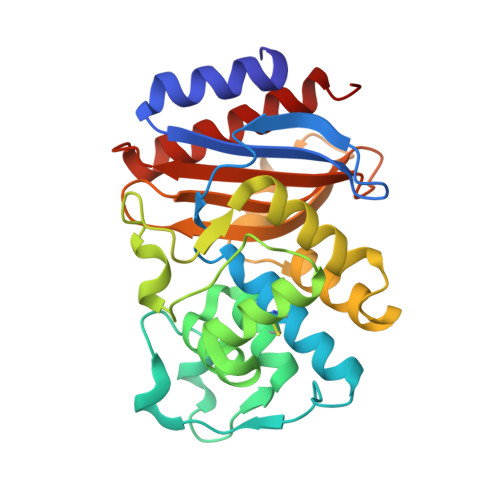The importance of the trans-enamine intermediate as a beta-lactamase inhibition strategy probed in inhibitor-resistant SHV beta-lactamase variants.
Ke, W., Rodkey, E.A., Sampson, J.M., Skalweit, M.J., Sheri, A., Pagadala, S.R., Nottingham, M.D., Buynak, J.D., Bonomo, R.A., van den Akker, F.(2012) ChemMedChem 7: 1002-1008
- PubMed: 22438274
- DOI: https://doi.org/10.1002/cmdc.201200006
- Primary Citation of Related Structures:
3V50, 3V5M - PubMed Abstract:
The ability of bacteria to express inhibitor-resistant (IR) ¦Â-lactamases is stimulating the development of novel inhibitors of these enzymes. The 2'¦Â-glutaroxypenicillinate sulfone, SA2-13, was previously designed to enhance the stabilization of the deacylation-refractory, trans-enamine inhibitory intermediate. To test whether this mode of inhibition can overcome different IR mutations, we determined the binding mode of SA2-13 through X-ray crystallography, obtaining co-crystals of the inhibitor-protein complex by soaking crystals of the IR sulfhydryl variable (SHV) ¦Â-lactamase variants S130G and M69V with the inhibitor. The 1.45 ? crystal structure of the S130G?SHV:SA2-13 complex reveals that SA2-13 is still able to form the stable trans-enamine intermediate similar to the wild-type complex structure, yet with its carboxyl linker shifted deeper into the active site in the space vacated by the S130G mutation. In contrast, data from crystals of the M69V SHV:SA2-13 complex at 1.3 ? did not reveal clear inhibitor density indicating that this IR variant disfavors the trans-enamine conformation, likely due to a subtle shift in A237.
Organizational Affiliation:
Department of Biochemistry, RT500, School of Medicine, Case Western Reserve University, 10900 Euclid Avenue, Cleveland, OH 44106, USA.
















